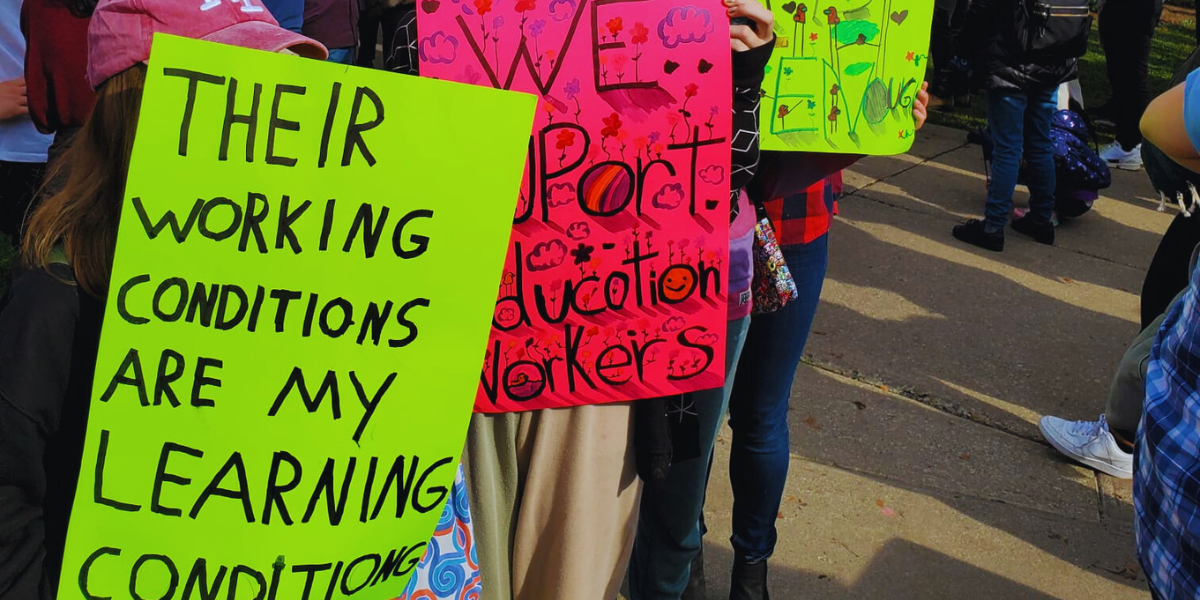This past week, anonymous letters from teachers at both Tomken Road Middle School and Homeland Senior Public School in Mississauga have been posted on Twitter and caused a flurry of activity and speculation. School Board officials say they are investigating conditions at both schools, which have been described as “unsafe” and in a “state of crisis.”
The letters describe violence, vandalism, discriminatory language and slurs, threats and a bevy of unsafe conditions. The teacher behind the letter (who has remained anonymous) told CBC News, “We’re talking about a school, a climate in a school where staff and students are scared to walk down the hall. Just to walk from one class to another can incite fear in students and staff. We’re talking about students completely ignoring any type of structure in the school, any type of rules.”
People working in schools across Ontario will no doubt be able to share their own version of these stories. Everyone seems to agree that dangerous behaviours are at an all-time high and a recent Elementary Teachers’ Federation of Ontario member survey found that 77 percent of members say they have personally experienced violence or witnessed violence against another staff member.
The reaction to the letter reveals some long standing debates within the education field about what is to blame for these types of unsafe working and learning conditions and how they can be fixed. While all sides agree that these are problems that need a solution, there emerges somewhat of a division over how to proceed.
On the one hand, you have education workers that will tell you this behaviour is the inevitable result of a “lack of consequences for students” and an “overfocus on equity and student identity, voice and choice.” The solutions this side usually offer are a return to harsher consequences for students, stronger support from administration in enforcing consequences for bad behaviour and a generally more punitive approach to classroom management, up to and including inviting police back into schools.
Other voices in staff rooms and online have suggested that student behaviour is a form of communication and the current behaviours seen in schools communicate that “the kids are not alright.” This train of thought tends to point to the frequently observed shortages of the supports that students need to be successful. Everywhere you look there are shortages of education assistants, supply teachers and early childhood educators. Staff are burning out and taking medical leaves and people report feeling like they are always tugging for their share of a blanket that seems to be getting smaller and smaller. The solutions this side of the debate tend to favour are more funding, smaller class sizes, more support staff and professional development to help implement some of the restorative justice practices and equity initiatives that are often talked about, but seldom given the time, resources and support necessary to make them work.
Which way forward?
When deciding which approach teachers and education workers should be advocating for, it is worthwhile to think about which side is which?
The drive for a “return to harsher consequences” lines up nicely with the Ford government’s current prerogatives; Doug Ford has cut $1200 per student, invited cops back into schools, and has suggested one solution to violence in schools is that parents should beat their children. Calls to just punish harder and move away from anti-oppression initiatives in school boards help bolster Ford’s current plan to reduce funding, cut programming and spend money on police and protection.
On the other hand, doing what we can to make students feel heard and seen so that they “buy in” to what they are learning and feel a sense of ownership and responsibility over their own success and their school community is a worthwhile goal that can have a ton of positive outcomes. But for these more holistic approaches to education, justice and community, staff need time, resources and support. Lately, school boards have talked a big game about equity, anti-racism and student voice, but they often end up being either just a nice press release and nothing more or yet another task added to a teacher’s workload.
For practices like restorative justice, inquiry based learning and other worthy experiments in education to work, they can’t just be nice declarations for press releases and websites that pile another task onto already burned out teachers. Successful implementation requires funding.
Our answer to the crisis in education must be clear: more staff, smaller classes and more funding.
Did you like this article? Help us produce more like it by donating $1, $2, or $5. Donate

